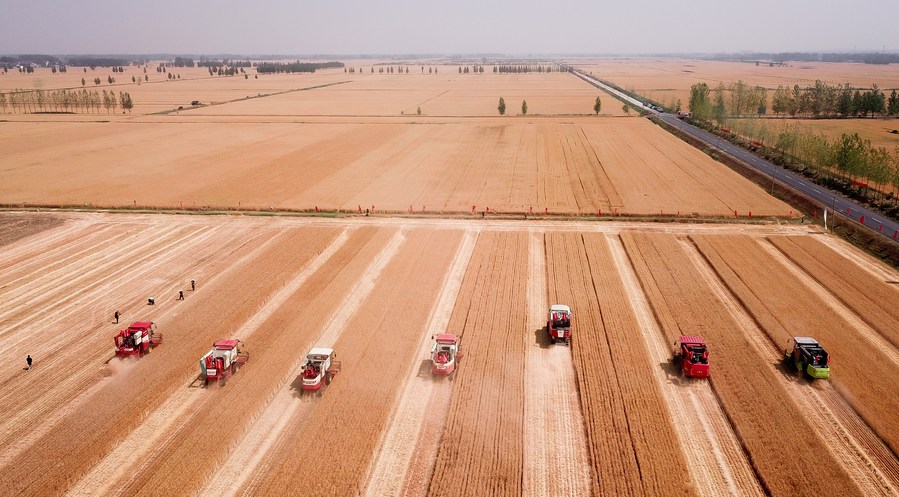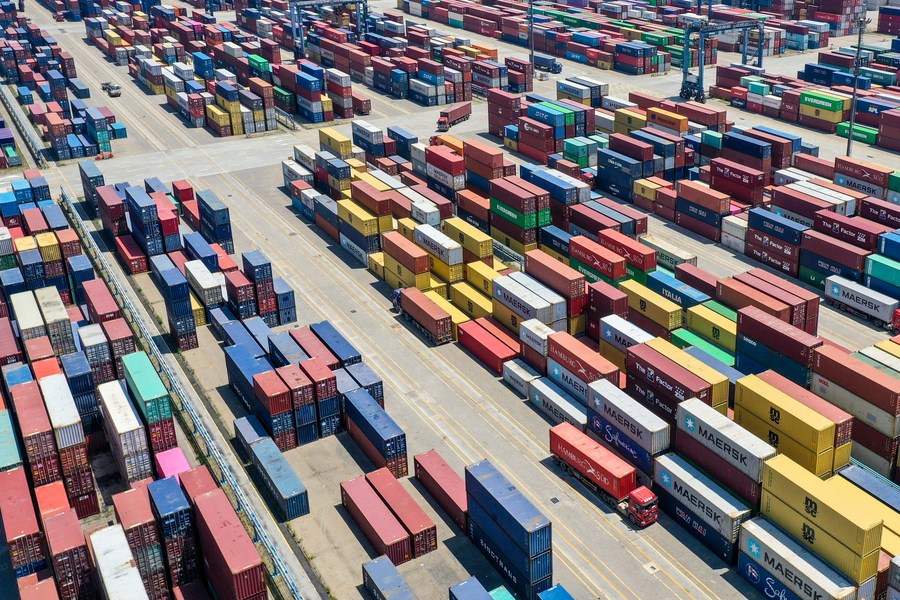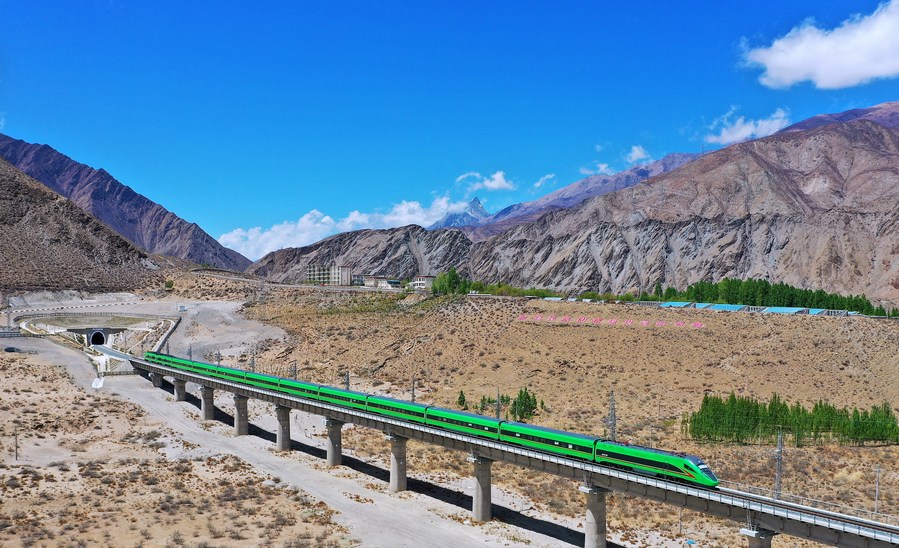* Over the past decade, the Chinese economy has sustained rapid growth and cemented its global status as a major growth contributor.
* With a vast market of 1.4 billion people, solid economic growth, and an improving business environment, China has remained a favorite destination for foreign investment throughout the past decade.
* Over the past decade, China has put innovation high on its agenda to boost competitiveness and invigorate the economy.
* China's economic development has translated into a steady increase in resident income, improving people's livelihoods notably over the past decade.
Through a decade of steady growth, China has evolved into the world's major economic powerhouse, with numerous milestone achievements made along the journey of high-quality development.
Powering ahead on a development path that is innovation-driven, sustainable, and more open to the world, China has kept injecting momentum into the global economy. The following figures and facts provided by the National Bureau of Statistics shed some light on how the world's second-largest economy transformed and thrived over the past ten years.

Aerial photo taken on July 23, 2021 shows the Yachihe Bridge of Guiyang-Qianxi Expressway in southwest China's Guizhou Province. (Xinhua/Yang Wenbin)
DRIVING GLOBAL GROWTH
Over the past decade, the Chinese economy has sustained rapid growth and cemented its global status as a major growth contributor.
In 2021, China's gross domestic product reached 17.7 trillion U.S. dollars, accounting for 18.5 percent of the world's total. From 2013 to 2021, it grew at an average annual rate of 6.6 percent, beating the global level of 2.6 percent.
With the rapid economic expansion, China has become a major driving force for global growth. During the 2013-2021 period, its contribution to global economic growth averaged 38.6 percent, higher than that of the Group of Seven countries combined.
Agriculture, a pillar of the economy, has registered stable growth. Since 2012, the output of grain, meat, peanuts, and tea ranked first in the world, while rapeseed output placed second.
On the industrial front, the country's main industrial product output has risen steadily. The output of crude steel, coal, power, cement, fertilizer, automobiles, micro-computers, and mobile phones led the world.

Aerial photo taken on June 2, 2022 shows harvesters reaping wheat in the fields in Tancheng County of Linyi City, east China's Shandong Province. (Xinhua/Guo Xulei)
OPENING WIDER
Amid endeavors to open up wider to the world, China's foreign trade has seen a robust expansion in the past decade. In 2020, the country surpassed the United States to become the world's largest trading country for the first time, with a total foreign trade volume of 5.3 trillion U.S. dollars, up from 4.4 trillion dollars in 2012.
Last year, China's foreign trade volume further expanded to 6.9 trillion dollars, continuing to take first place globally. Its foreign trade in goods rose from 3.9 trillion dollars in 2012 to 6.1 trillion dollars last year, accounting for 13.5 percent of the world's total.
The country has also remained the largest trader in goods and second-largest trader in services in the world.
With a vast market of 1.4 billion people, solid economic growth, and an improving business environment, China has remained a favorite destination for foreign investment throughout the past decade.
Since 2020, China has remained the second-biggest recipient country for foreign direct investment (FDI). FDI into the country, in actual use, came in at 173.5 billion dollars in 2021, compared with 113.3 billion dollars in 2012, increasing by 4.8 percent on average each year.

Aerial photo taken on May 6, 2022 shows a view of the Longtan Container Terminal of Nanjing Port in Nanjing, east China's Jiangsu Province. (Xinhua/Li Bo)
INNOVATION-DRIVEN DEVELOPMENT
Over the past decade, China has put innovation high on its agenda to boost competitiveness and invigorate the economy.
The country rose to 12th on the Global Innovation Index 2021, up from the 34th in 2012, said the World Intellectual Property Organization. It ranked first among middle-income economies.
Amid the innovation drive, the number of Chinese companies on the Fortune Global 500 list has grown since 2012. In 2021, 145 Chinese companies made it to the list, climbing from 95 in 2012 and increasing for 19 consecutive years.
In terms of telecommunication infrastructure, the country has built the world's largest 5G network, with a total of 1.43 million 5G base stations installed across the country by the end of 2021, accounting for over 60 percent of the world's total.
Backed by technological advancement, China has accelerated the construction of high-speed transportation networks. The country boasts the world's most developed high-speed rail network, with high-speed railways stretching to a total length of 40,000 km by the end of 2021, up 330 percent from 2012.
The extent of expressways in operation has also reached 169,000 km, an increase of 80 percent over the past decade, ranking first globally.

A Fuxing bullet train runs on the Lhasa-Nyingchi railway in southwest China's Tibet Autonomous Region, April 14, 2022. (Xinhua/Chogo)
BETTER LIFE
China's economic development has translated into a steady increase in resident income, improving people's livelihoods notably over the past decade.
The gross national income per capita reached 11,890 U.S. dollars last year, doubling from the figure recorded in 2012. The expansion helped elevate China from 112th to 68th in the same timeframe as per a World Bank ranking.
China eliminated absolute poverty in 2020, with 12.37 million rural residents lifted out of poverty on a yearly average between 2012 and 2020. This achievement enabled China to meet the poverty eradication target in the United Nations 2030 Agenda for Sustainable Development ten years ahead of schedule.
Thanks to the income growth and improvements in education and health care, the average life expectancy of Chinese people reached 77.9 years in 2020, 5.2 years above the global average.










